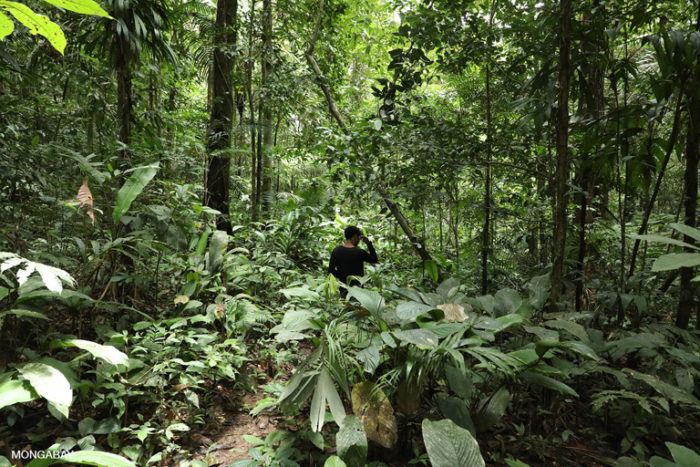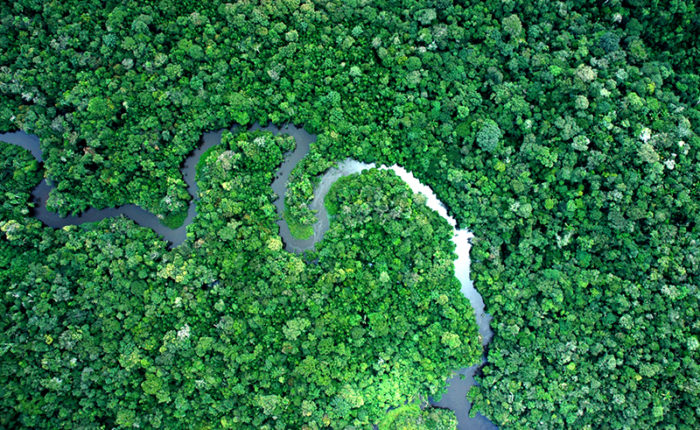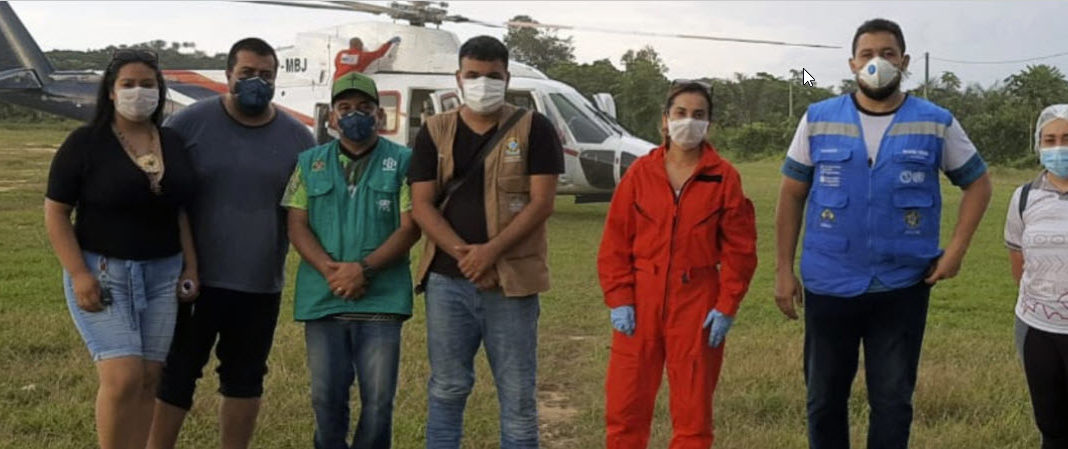- A 20-year-old Kokama indigenous woman in northern Amazonas state tested positive for the virus, according to the federal government’s body in charge of health services for indigenous people in Brazil (SESAI).
- She is one of 27 people who are being monitored after being in contact with Dr. Matheus Feitosa, who was diagnosed with COVID-19 last week. Feitosa is a SESAI doctor and he gave treatment to 10 indigenous people in a Tikuna village before developing a fever and going into voluntary isolation.
- Dr. Sofia Mendonça, coordinator of the Xingu Project at the Federal University of São Paulo fears that coronavirus could have a similar impact to the big epidemics of the past. “There is an incredible risk that the virus spreads through the communities and causes genocide,” she told the BBC.
Brazil’s Health Ministry confirmed on April 1 the first case of COVID-19 among indigenous people in the Amazon, raising concerns about the spread of the pandemic and its effects on native people.
A 20-year-old Kokama indigenous woman in northern Amazonas state tested positive for the virus, according to SESAI, the federal government’s body in charge of health services for indigenous people in the country.
The indigenous woman is a health agent and lives in the village of São José in the district of Santo Antônio do Içá, about 250 kilometers (155 miles) from the border with Colombia, according to news reports. She reportedly traveled to the upper Solimões River region on a routine health trip, and returned with a fever and pain in her head, throat and chest.
On March 31 the Kokama woman posted this message on social media: “On March 18 I was with a colleague who later developed COVID-19 and three days later I developed a dry cough and lost my sense of taste and smell.” She is one of 27 people who are being monitored after being in contact with Dr. Matheus Feitosa, who was diagnosed with COVID-19 last week, according to news reports.

In a statement published by news portal G1, SESAI said that Feitosa gave treatment to 10 indigenous people in a Tikuna village — using gloves and a mask, which is normal practice for SESAI doctors — before developing a fever and going into voluntary isolation.
According to the Health Ministry, Feitosa returned to work after a holiday in the southern states of Santa Catarina and Paraná “without showing any symptoms of coronavirus.” Seven days later he was diagnosed with COVID-19. According to news reports, Feitosa believes he caught the virus either during his holiday or during his boat trip to Santo Antônio do Içá.

Andrey Moreira Cardoso, a doctor and researcher for the Oswaldo Cruz Foundation (ENSP/FIOCRUZ) and for the Working Group for Indigenous Health in the Brazilian Association of Collective Health (ABRASCO), fears that there could be an explosive increase of coronavirus in the villages. In an interview published on the website of the Socioenvironmental Institute (ISA), he explains that, although indigenous and non-indigenous are immunologically susceptible to a virus that has never reached them before, respiratory infections spread very quickly among indigenous people because their economic and health conditions are generally worse than those of the non-indigenous.
“We have been told by the world that coronavirus affects older people more seriously,” he said. “But we don’t know if this is what will happen in the villages. We know that indigenous children have high levels of anemia and malnutrition and that their lungs may also be in a poor condition because they may have been affected by fires [in the forest] and they may have had repeated respiratory infections.”
Call for urgent measures
With the confirmation of the first indigenous case of COVID-19, the Federal Prosecutors’ Office on April 2 has requested the authorities responsible for indigenous health to take a series of protective actions, like the inclusion of indigenous people in a priority group for vaccination against flu. The prosecutors also requested that indigenous people be provided with food, cleaning materials and tests to see whether or not they have caught coronavirus, as well as health teams throughout all indigenous territories.
Weydson Pereira, a local coordinator of health services for indigenous people in Alto Solimões, told news agency Amazônia Real that indigenous people in Lago Grande village were required to stay in their homes and to avoid social contact. In all, almost 900 inhabitants of the village have practicing voluntary isolation since they received the news, the report said. On April 1 SESAI confirmed that the tests carried out on the 12 Tikuna indigenous people were all negative.
Doctor Sofia Mendonça, coordinator of the Xingu Project in the Federal University of São Paulo (UNIFESP), fears that coronavirus could have a similar impact to the big epidemics of the past. “There is an incredible risk that the virus spreads through the communities and causes genocide,” she told the BBC.

Mendonça calls for urgent action to halt the virus reaching isolated indigenous groups. According to FUNAI, the Brazilian government’s indigenous agency, 107 such groups are believed to exist in the Brazilian Amazon. Many of them live in Amazonas state.
Banner image caption: Health officials from SESAI — the federal government’s body in charge of health services for indigenous people — were sent to monitor indigenous people in the Lago Grande village in Amazonas state. Image courtesy of Santo Antônio do Içá heath department.

